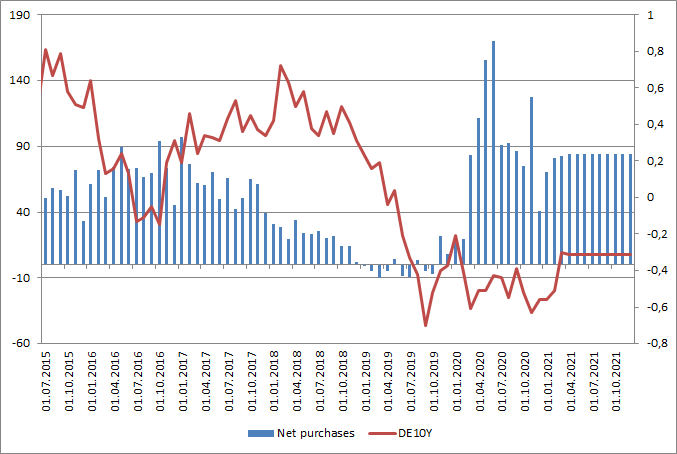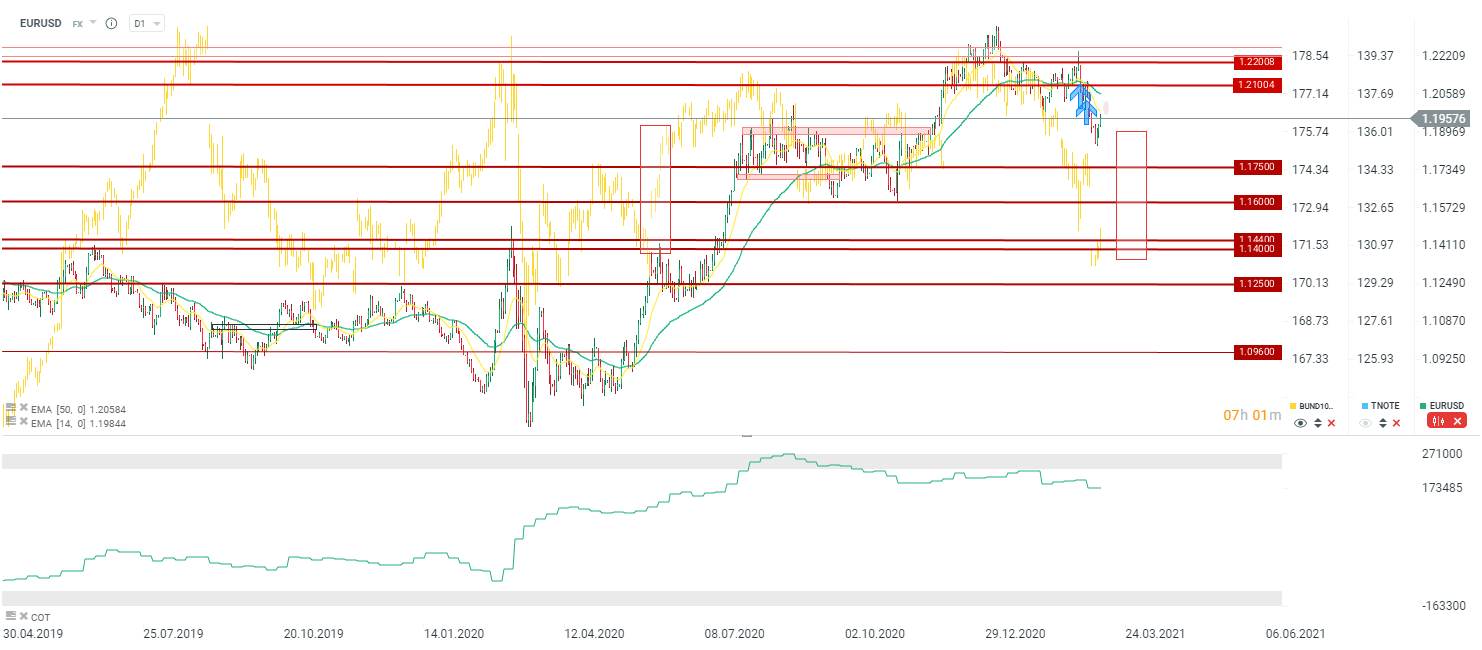Christine Lagarde at the ECB conference had to answer questions mainly regarding the increase of the pace of asset purchases under the PEPP program (for the sake of simplicity, let's just say that it's all just a quantitative easing program - QE).
The ECB wanted to intervene due to the recent strong rise in bond yields. It is worth noting that the euro area has fallen victim to rising bond yields in the United States. However, the current situation in the euro area does not really justify the recent rise in bond yields. On the other hand, when looking at the levels of bond yields, in most cases we are still talking about negative yields in the euro zone (eg German 10-year bonds). Therefore, we cannot say that the recent increases are an abnormal situation.
Start investing today or test a free demo
Create account Try a demo Download mobile app Download mobile appNevertheless, looking at the previous pace of purchases, it can be seen that even during the period of increased purchases, yields could have remained high. This is shown in the chart prepared by Nordea (below). At the same time, Lagarde emphasized a few things that may additionally disappoint the market - the size of the PEPP program at $ 1.85 trillion will not increase! Perhaps the program itself will be extended after March 2022, but it would probably be caused by slower reduction of asset purchases. The second important thing was Lagarde's statement that the ECB did not use yield curve management. This is understandable, although it may be perceived by the market as a lack of willingness to take additional action.
What does this mean for the market? We are currently observing ECB attempts to lower bond yields. However, these measures will not stop the rise in yields in the euro area in the long run. Theoretically, increasing the pace of asset purchases to 150 billion per month could lead to a decline in yields to around -0.5% for German 10-year bonds, as was the case in the middle of last year. On the other hand, it probably won't be a permanent effect. External factors and a potential further rebound in inflation expectations will remain the key issues.
 Will the pace of ECB purchases be able to contain further rise of bond yields? One can guess that if the pace is actually not significant (i.e. similar to the first half of 2020), then bond yields may not react at all. Source: XTB, Macrobond (Please note, that the chart shows the "forecast period" until the end of 2021).
Will the pace of ECB purchases be able to contain further rise of bond yields? One can guess that if the pace is actually not significant (i.e. similar to the first half of 2020), then bond yields may not react at all. Source: XTB, Macrobond (Please note, that the chart shows the "forecast period" until the end of 2021).
 Will the pace of asset purchases increase enough to trigger the same increase in bond yields we saw last year around the end of May and June? It is worth remembering that at that time we also observed a correction on the stock market. The increase during this period is marked with a red rectangle. Source: xStation5
Will the pace of asset purchases increase enough to trigger the same increase in bond yields we saw last year around the end of May and June? It is worth remembering that at that time we also observed a correction on the stock market. The increase during this period is marked with a red rectangle. Source: xStation5

